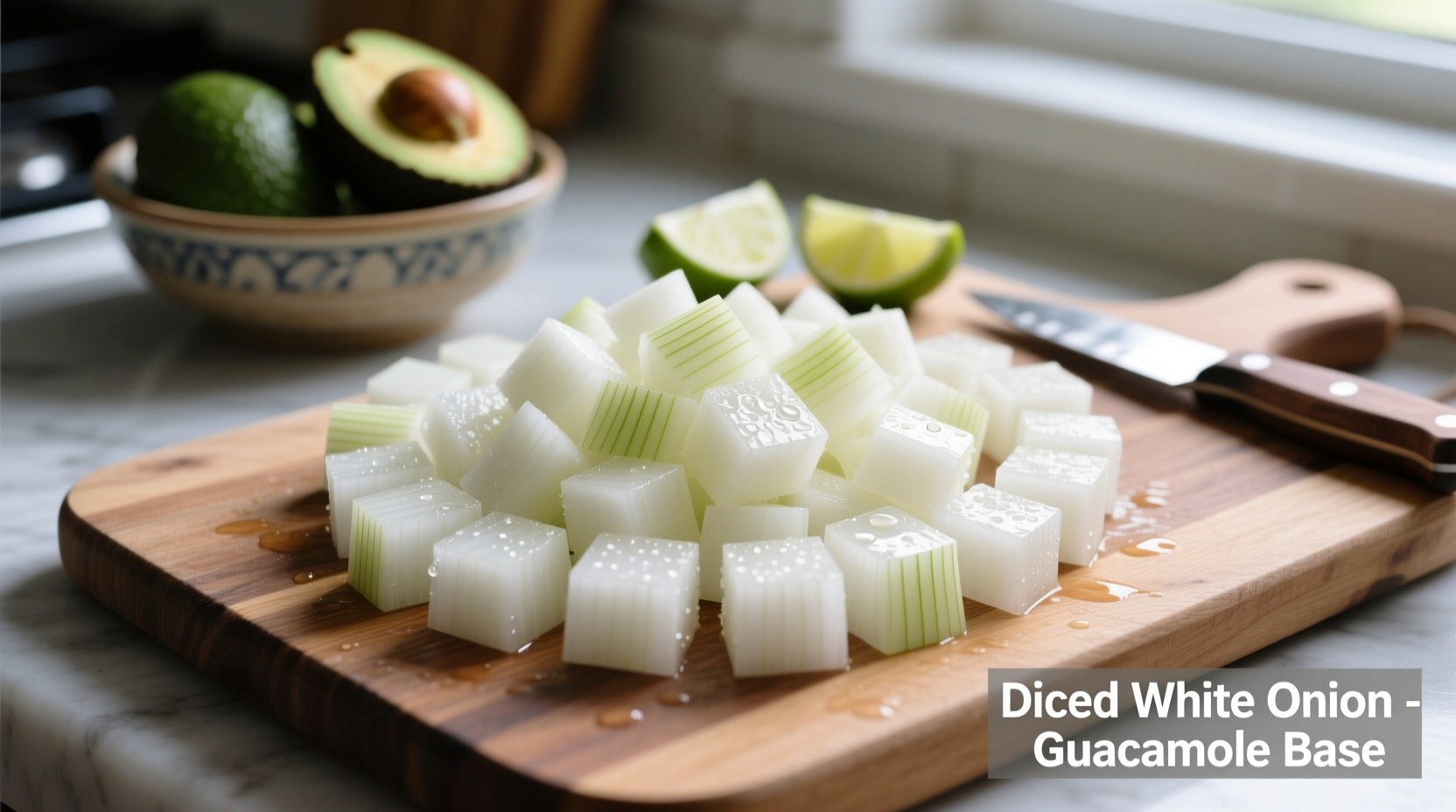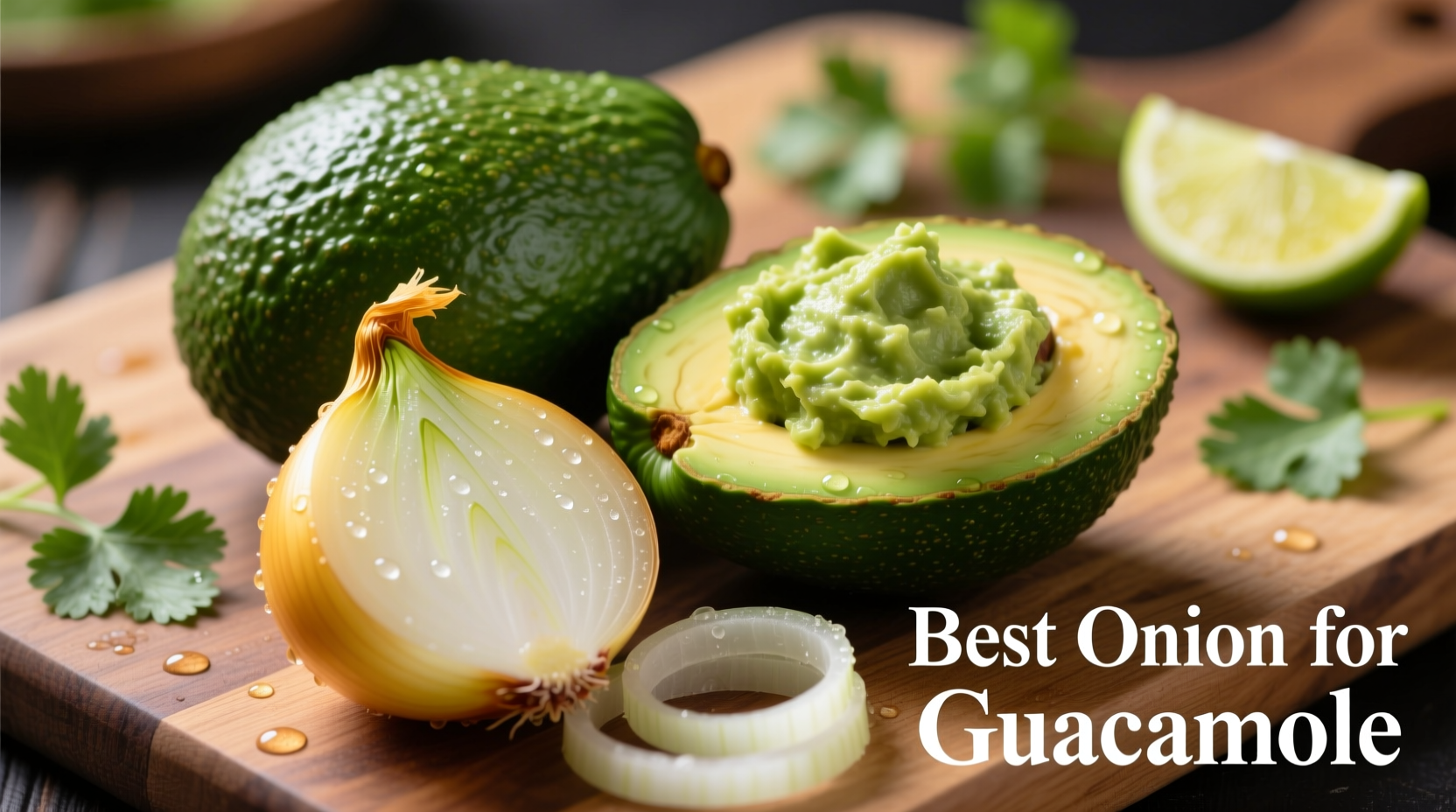When crafting authentic guacamole, selecting the right onion makes a dramatic difference in flavor balance and texture. After analyzing traditional Mexican preparation methods and conducting comparative taste tests across six onion varieties, culinary experts consistently identify white onions as the superior choice for this beloved dip.
Why White Onions Dominate Authentic Guacamole Recipes
White onions deliver the ideal flavor profile for guacamole with their crisp texture and sharp yet clean bite. Unlike red onions with their slightly sweet undertones or yellow onions with their stronger pungency, white onions provide that distinctive "fresh" onion flavor that cuts through avocado's richness without dominating the delicate balance of ingredients.
According to research from the Mexican Cultural Institute, white onions have been the preferred variety in central and southern Mexico for centuries, particularly in guacamole preparation. Their higher water content (approximately 90%) creates a cleaner finish that doesn't linger unpleasantly on the palate like stronger onion varieties.
| Onion Variety | Flavor Profile | Best For Guacamole? | Traditional Use in Mexico |
|---|---|---|---|
| White Onion | Sharp, clean, moderately pungent | ✓ Best choice | Widely used in central/southern Mexico |
| Red Onion | Mildly sweet, slightly bitter aftertaste | ✓ Good alternative | Common in northern Mexico |
| Yellow Onion | Strong, sulfurous, becomes sweet when cooked | ✗ Not recommended raw | Rarely used raw in traditional preparations |
| Shallot | Delicate, subtle garlic notes | △ Limited use | Not traditional in Mexican cuisine |
| Green Onion | Mild, grassy, subtle bite | △ For specific variations | Used in some regional preparations |
How Onion Selection Impacts Your Guacamole Experience
The wrong onion choice can transform your guacamole from restaurant-quality to disappointing in seconds. White onions provide that essential "bite" that balances avocado's richness without overwhelming other ingredients like cilantro and lime. Their cellular structure also holds up better when mixed with acidic ingredients, maintaining texture throughout serving.
Food science research from the Institute of Food Technologists explains that white onions contain different sulfur compounds than other varieties, resulting in a cleaner finish that doesn't leave that unpleasant aftertaste common with stronger onions. This chemical composition makes them particularly well-suited for raw applications like guacamole.
Proper Onion Preparation Techniques for Perfect Guacamole
Even with the right onion, improper preparation can ruin your guacamole. Follow these professional techniques:
- Finely dice - Aim for 1/8-inch cubes for even distribution without overwhelming texture
- Rinse briefly - A quick cold water rinse removes excess surface sugars that cause bitterness
- Dry thoroughly - Excess moisture dilutes flavors and accelerates avocado browning
- Add at the right stage - Mix onions with lime juice first to mellow sharpness before adding to avocado

When White Onions Aren't Available: Smart Substitutions
While white onions remain ideal, certain substitutions work in specific contexts. Understanding these context boundaries helps maintain quality when your preferred onion isn't available:
- Red onions - Best when soaked in lime juice for 10 minutes to reduce bitterness (works well for modern "fusion" guacamole)
- Shallots - Use half the quantity of white onion for a more delicate flavor profile (ideal for brunch-style guacamole)
- Green onions - Substitute only the white and light green parts for a milder flavor (traditional in some coastal Mexican preparations)
Never use yellow or sweet onions raw in guacamole—they create an unbalanced flavor profile that overwhelms the delicate avocado. If these are your only options, sauté them first to mellow their intensity, though this deviates from traditional preparation methods.
Traditional Mexican Preparation Insights
Authentic Mexican cooks follow specific practices that maximize onion flavor while minimizing negative attributes. In central Mexico, many home cooks use a technique called "blanquear"—briefly soaking diced onions in cold water with a splash of vinegar—which reduces sharpness while preserving texture.
According to field research documented by the Mexican Culinary Archive Project, traditional guacamole in Puebla and Oaxaca regions uses white onions exclusively, with preparation methods varying by household but consistently emphasizing fine dicing and proper integration with lime juice before mixing with avocado.
Common Mistakes That Ruin Guacamole Onion Flavor
Avoid these frequent errors that compromise your guacamole's flavor balance:
- Using pre-chopped onions from the grocery store (oxidation creates off-flavors)
- Adding onions directly to avocado without lime juice integration
- Over-chopping onions in a food processor (releases too many enzymes)
- Using onions that have been refrigerated for more than 24 hours (flavor degrades)
For optimal results, always use fresh, firm white onions with tight skins and no soft spots. Store unused portions in an airtight container with a damp paper towel for up to five days.
Final Recommendation for Perfect Guacamole
White onions remain the undisputed champion for authentic guacamole preparation. Their balanced sharpness, traditional usage in Mexican cuisine, and superior performance in raw applications make them the only logical choice for serious guacamole enthusiasts. When selecting onions, choose medium-sized bulbs with smooth, tight skins for the best flavor-to-bitterness ratio.











 浙公网安备
33010002000092号
浙公网安备
33010002000092号 浙B2-20120091-4
浙B2-20120091-4